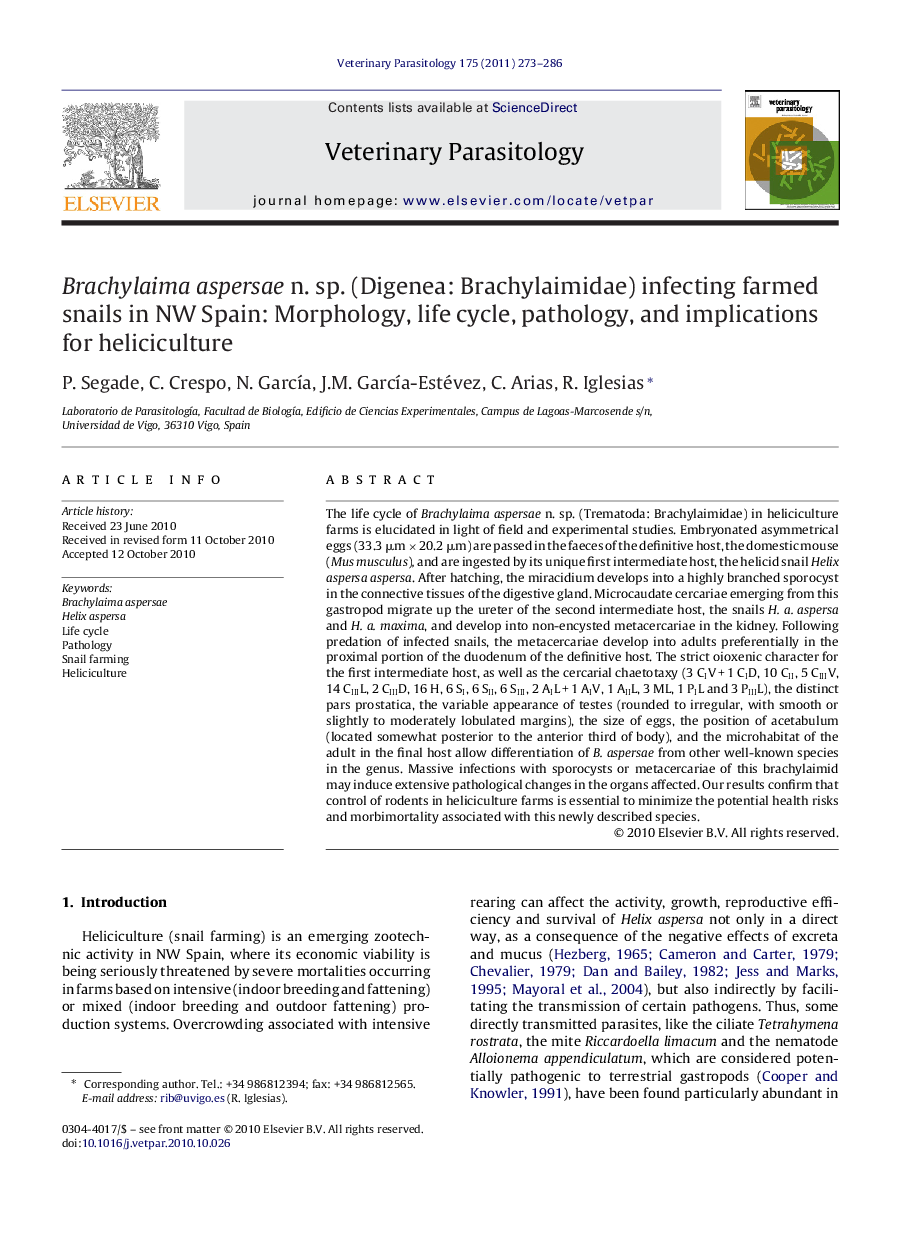| کد مقاله | کد نشریه | سال انتشار | مقاله انگلیسی | نسخه تمام متن |
|---|---|---|---|---|
| 5806086 | 1555730 | 2011 | 14 صفحه PDF | دانلود رایگان |

The life cycle of Brachylaima aspersae n. sp. (Trematoda: Brachylaimidae) in heliciculture farms is elucidated in light of field and experimental studies. Embryonated asymmetrical eggs (33.3 μm Ã 20.2 μm) are passed in the faeces of the definitive host, the domestic mouse (Mus musculus), and are ingested by its unique first intermediate host, the helicid snail Helix aspersa aspersa. After hatching, the miracidium develops into a highly branched sporocyst in the connective tissues of the digestive gland. Microcaudate cercariae emerging from this gastropod migrate up the ureter of the second intermediate host, the snails H. a. aspersa and H. a. maxima, and develop into non-encysted metacercariae in the kidney. Following predation of infected snails, the metacercariae develop into adults preferentially in the proximal portion of the duodenum of the definitive host. The strict oioxenic character for the first intermediate host, as well as the cercarial chaetotaxy (3 CIV + 1 CID, 10 CII, 5 CIIIV, 14 CIIIL, 2 CIIID, 16 H, 6 SI, 6 SII, 6 SIII, 2 AIL + 1 AIV, 1 AIIL, 3 ML, 1 PIL and 3 PIIIL), the distinct pars prostatica, the variable appearance of testes (rounded to irregular, with smooth or slightly to moderately lobulated margins), the size of eggs, the position of acetabulum (located somewhat posterior to the anterior third of body), and the microhabitat of the adult in the final host allow differentiation of B. aspersae from other well-known species in the genus. Massive infections with sporocysts or metacercariae of this brachylaimid may induce extensive pathological changes in the organs affected. Our results confirm that control of rodents in heliciculture farms is essential to minimize the potential health risks and morbimortality associated with this newly described species.
Journal: Veterinary Parasitology - Volume 175, Issues 3â4, 10 February 2011, Pages 273-286